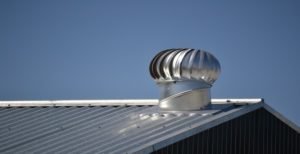A fireplace is in many ways one of the best places in the home. It brings about some level of warmth in the home especially during the winter days. However, it also comes with its own fair share of disadvantages as we are about to find out.
Pros:
1. Cozy Fires: No other type of heating appliance offers the kind of cozy warmth that you can only get from a fire. Whether you have an open hearth, a fireplace insert, a wood stove, or a pellet stove, you can watch the fire dancing as the outside cold melts away.
2. A Romantic Setting: Sitting in front of a fire with the person you love, perhaps sipping wine, can be very romantic. Few features in the home offer an instant potentially dreamy escape, like a fireplace. Parents who have trouble finding a babysitter can enjoy a romantic fireside atmosphere, without having to go anywhere.
3. Warmth when the Electricity is out: When the worst kinds of winter storms hit, electricity is often knocked out. If you have a fireplace, you can still keep warm and have plenty of light. People without fireplaces are freezing cold and waiting for the utility company to restore power.
4. Fire for Cooking: If you have a wood burning stove, you have the added benefit of being able to cook on it. Save money on your utility bill by heating your soup or coffee on the stove as the fire warms your home. Whenever the electricity is out in any season, meals won’t be a problem, since you can still cook.
5. Eco-Friendly Heating: Today’s wood burning appliances are incredibly efficient, producing plenty of heat to warm your home, meaning you can use less of the fossil-fueled energy supply. Some of the latest models even make it possible to distribute the heat from the appliance throughout the home using existing ductwork.
6. Very efficient: A fireplace is always an efficient and ideal place in the home. It provides a natural way of heating up your home which makes it cosy and homely.
7. Burns wide: Wood burners are cheap to run and can heat a large area. Unlike other types of heating, fireplaces have a wider radius of heating which means you whole home will be heated up.
8. Clean energy: Biofuel fires burn clean, don’t need a chimney and use a green energy source. This means that there is reduced pollution to the environment and this also guarantees a safe haven for your children at home.
9. Gas and biofuel fireplaces fit a number of spaces: The fireplace, especially those that burn with biofuel, require a very small area of operation and can fit into significantly smaller places.
10. Gas is easy to turn on and off and provides instant heat: Gas fireplaces are also very ideal for the home because they are easy to turn on and off at any time and can be operated by anyone in the home. This not only makes them safe but also convenient.
Cons:
1. Wood burners can’t be turned on and off and surfaces can get hot: It is easy to burn surfaces when using wood burners which means that they are not entirely safe and ideal at all times.
2. Wood needs to be stored and smoke contributes to air pollution: Besides the fact that wood requires a special kind of storage, it is also a risk to the freshness and cleanliness of the air around which the wood burns. So fireplaces are not entirely ideal.
3. Wood burners may need building consent: In most instances, you cannot just build a wood burner in your home without getting the necessary licenses that are given by the authorities.
4. Gas price may fluctuate; non-renewable resource: In instances where the fireplace uses gas, it may turn out to be a bit expensive in the long run. Also budgeting may be a big issue in cases where the prices keep on fluctuating.
5. Gas usually heats only one room: When using gas in a fireplace, one only gets to heat up one room which may be expensive because there will be need to have a fireplace in each and every room where heat is needed.
6. Biofuel fires are not a primary heating source: When using biofuel fires in a fireplace, one may need to get a primary heating source as these are not the primary sources of fire. This may also mean extra costs in cases where this is the case.
7. It is always a health risk: Fireplaces are always associated with health risks because of the smoke that is emitted during the heating up process. People may end up suffering from various respiratory diseases.
8. It may lead to air pollution: Air pollution is real and fireplaces are some of the reasons for air pollution. Because it is burning in an enclosed area, it is easy for the air to be polluted really fast.
9. It sometimes leads to suffocation: Fireplaces may lead to the suffocation of small children in the house if they are not put under control during the night.
10. It must always be supervised: Fireplaces must always be controlled because if left unattended, they may lead to fires that may destroy everything in the house.




I had no idea that wood-burning appliances are incredibly efficient as you said in the article. My wife and I moved into a new house and she really wants us to install a fireplace in the front room in order to make it feel cozier. It sounds like it might be good for us to hire a company to come and install one for us.
I loved that you mentioned a fireplace provides a romantic look to your living room. My husband and I are planning a remodeling, and a friend of ours recommend to add a fireplace. I will show him this article to help him make the right decision for our living room.